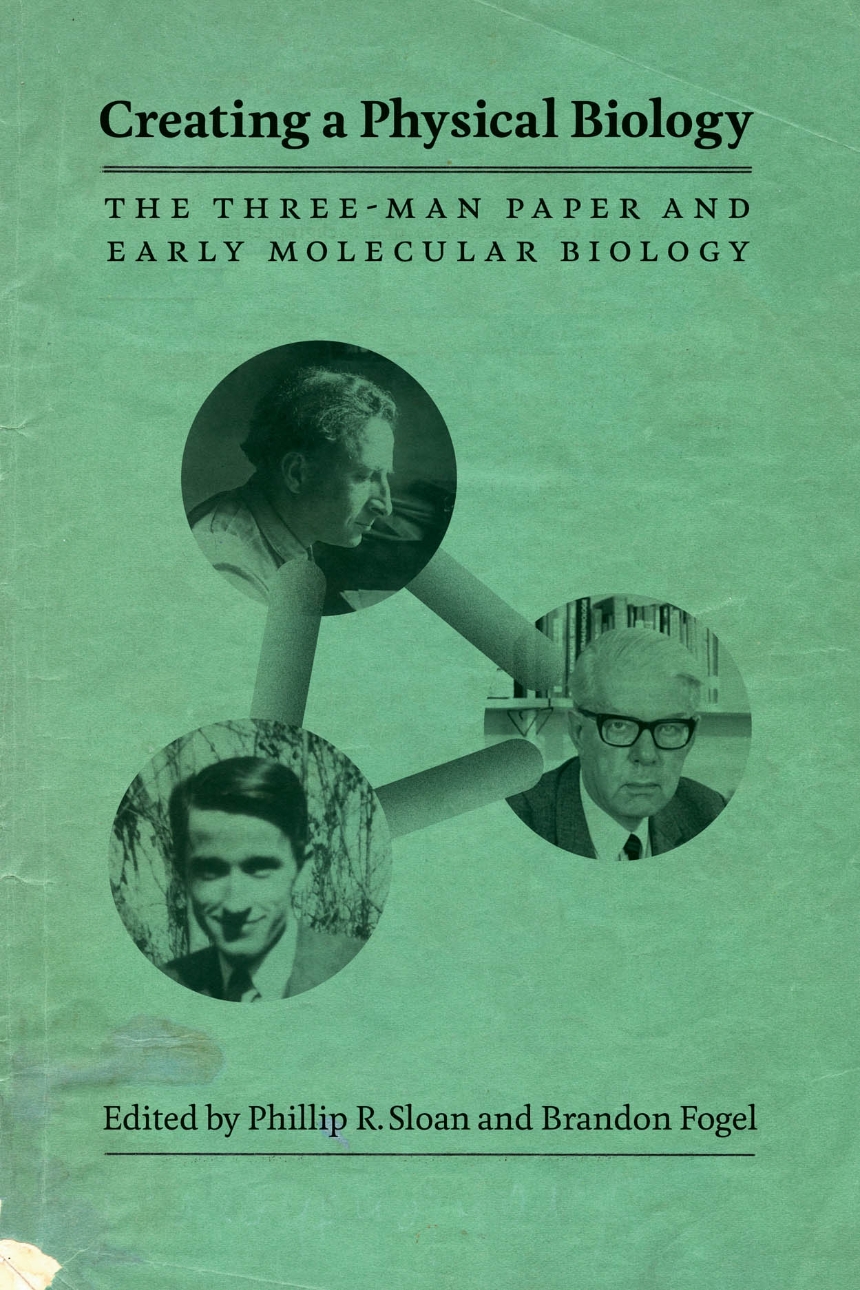Creating a Physical Biology
The Three-Man Paper and Early Molecular Biology
9780226767833
9780226762777
Creating a Physical Biology
The Three-Man Paper and Early Molecular Biology
In 1935 geneticist Nikolai Timoféeff-Ressovsky, radiation physicist Karl G. Zimmer, and quantum physicist Max Delbrück published “On the Nature of Gene Mutation and Gene Structure,” known subsequently as the “Three-Man Paper.” This seminal paper advanced work on the physical exploration of the structure of the gene through radiation physics and suggested ways in which physics could reveal definite information about gene structure, mutation, and action. Representing a new level of collaboration between physics and biology, it played an important role in the birth of the new field of molecular biology. The paper’s results were popularized for a wide audience in the What is Life? lectures of physicist Erwin Schrödinger in 1944.
Despite its historical impact on the biological sciences, the paper has remained largely inaccessible because it was only published in a short-lived German periodical. Creating a Physical Biology makes the Three Man Paper available in English for the first time. Brandon Fogel’s translation is accompanied by an introductory essay by Fogel and Phillip Sloan and a set of essays by leading historians and philosophers of biology that explore the context, contents, and subsequent influence of the paper, as well as its importance for the wider philosophical analysis of biological reductionism.
336 pages | 9 halftones, 11 line drawings, 14 tables | 6 x 9 | © 2011
Biological Sciences: Microbiology
Reviews
Table of Contents
Preface
CHAPTER 1. Introduction
Phillip R. Sloan and Brandon Fogel
Phillip R. Sloan and Brandon Fogel
PART 1. Historical Origins of the Three-Man Paper
CHAPTER 2. Physics and Genes: From Einstein to Delbrück
William C. Summers
CHAPTER 3. Biophysics in Berlin: The Delbrück Club
Phillip R. Sloan
CHAPTER 4. Exhuming the Three-Man Paper: Target-Theoretical Research in the 1930s and 1940s
Richard H. Beyler
PART 2. Philosophical Perspectives on the Three-Man Paper
CHAPTER 5. Niels Bohr and Max Delbrück: Balancing Autonomy and Reductionism in Biology
Nils Roll-Hansen
CHAPTER 6. Was Delbrück a Reductionist?
Daniel J. McKaughan
PART 3. The Three-Man Paper
Translator’s Preface
Brandon Fogel
The Text of the Three-Man Paper
Translated by Brandon Fogel
References in the Three-Man Paper
Prepared by James Barham
Combined Bibliography
List of Contributors
Index
